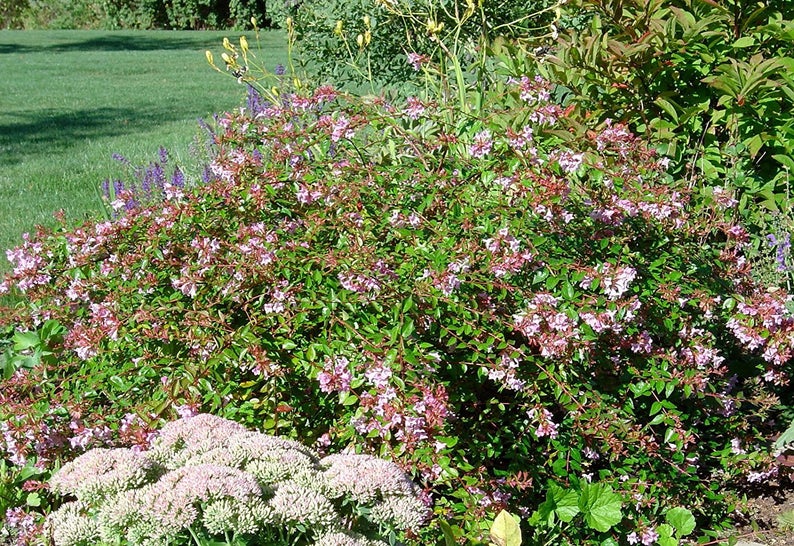Abelia 'Edward Goucher'
Approx. 0.5 litre pot
About this cultivar:
Abelia 'Edward Goucher' was introduced in 1911 by Edward Goucher of the United States Department of Agriculture. A superb hybrid between Abelia x grandiflora and Abelia shumannii. It is a compact, bushy shrub flowering on many somewhat arching stems. One of the 'glossy' abelias it has semi-evergreen foliage with a bronze tinge when young. The abundant flowers are lilac-pink while the calyx lobes surrounding them are bronze-tinged enhancing the bloom colour. A well-proved resilient plant, has the RHS Award of Garden Merit.
- Position: Full sun, partial shade (better in full sun)
- Soil: Almost any soil - Grows well in Ballyrobert
-
Flowers: June, July, August, September, October
- Other features: Royal Horticultural Society Award of Garden Merit (RHS AGM), Bees, Butterflies, and Bugs
- Hardiness: Fully Hardy - Grows well in Ballyrobert, H5 - Hardy in most places throughout the UK even in severe winters (-15 to -10°C)
- Habit: Bushy
- Foliage: Semi evergreen
- Height: 150 to 250 cm ( 5 - 9 ft)
- Spread: 150 to 250 cm ( 5 - 9 ft)
- Time to full growth: 10 to 20 years
- Plant type: Herbaceous Perennial, Shrub
- Colour: Pink, white, green
- Goes well with: Wall, Fence
About this genus:
Abelia is a genus of about 30 species and many hybrids in the honeysuckle family Caprifoliaceae. They are shrubs from 1–6 m tall, native to eastern Asia and Mexico; the species from warm climates are evergreen, and colder climate species deciduous. The leaves often turn purplish-bronze to red in autumn in the deciduous species. The flowers are pendulous, white to pink, bell-shaped, and usually scented. Flowering continues over a long and continuous period from late spring to autumn- the main selling point!
The genus name commemorates Clarke Abel, a keen naturalist who accompanied Lord Amherst's unsuccessful embassy to China in 1816 as surgeon, under the sponsorship of Sir Joseph Banks. All of Abel's seeds and plants were lost in a shipwreck on the homeward voyage, however; living plants of Abelia chinensis were first imported to England in 1844 by Robert Fortune, who introduced A. uniflora the following year. The showy semi-hardy Mexican A. floribunda of the Cordillera of Oaxaca was introduced to English horticulture in 1841.
Abelia have a reputation of not being hardy but it really depends on the species. But, just in case, keep it in a sheltered spot. They are great for a sunny spot and will grow in most soils.










